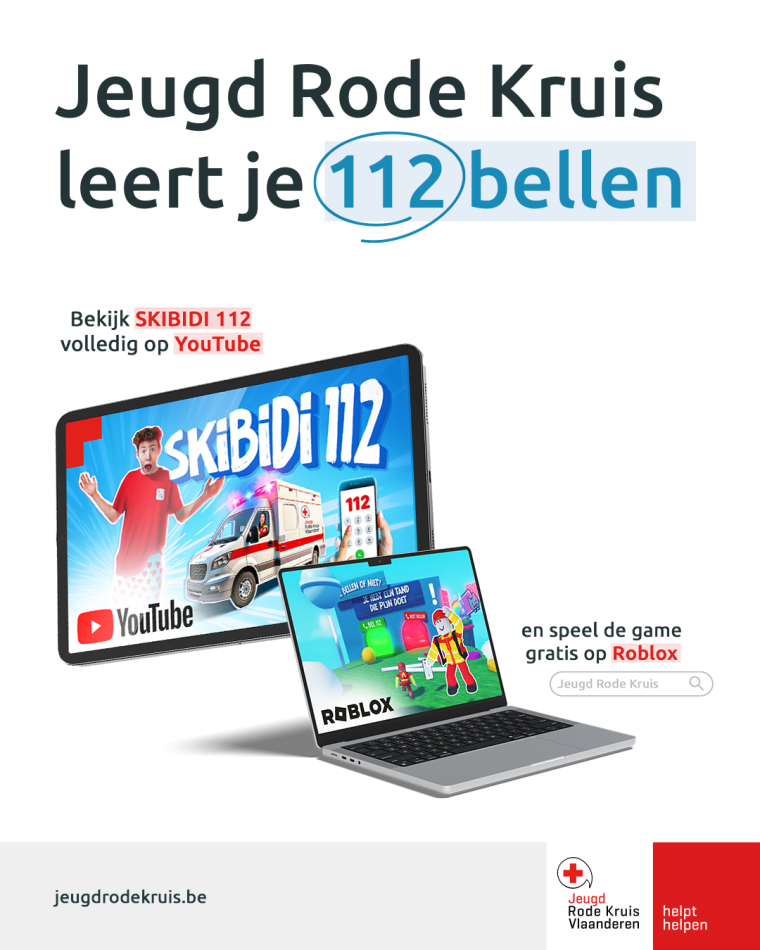Red Cross Youth launches campaign to teach children emergency number 112 and first aid

Children can save lives. With this slogan, Red Cross Youth Brugge and Red Cross Youth are launching a social media campaign to teach children and young people how to act in an emergency. "We notice that many young children do not always know the number 112 by heart. However, children as young as 6 are able to call the emergency services. But children can do much more: a 13-year-old can perfectly put a victim in a stable side position or even apply a pressure bandage. They just have to learn," said Gaëlle Huysentruyt, Red Cross Youth manager at Belgian Red Cross-Flanders. "With the video from Red Cross Youth Brugge, we are trying to bring this further to their attention."
What if mom falls down the stairs or grandpa feeling unwell and becomes unresponsive? Many children don't know how to respond, even though the first few minutes are crucial. For example, research shows that in countries where more people have first-aid knowledge, survival rates in cardiac arrest are higher.
"Figures from the Belgian Heart Rhythm Association show that in case of cardiac arrest, your chance of survival is four times higher in Germany than in Belgium," says Gaëlle Huysentruyt, "Here, CPR is initiated just as often, but Germans take first aid training twice as often as Belgians. With this campaign, we want to make children aware of the importance of first aid from a young age and encourage adults to refresh their knowledge."
Campaign on social media with online game and video
Red Cross Youth Brugge elaborated the video that is used for the social media campaign, in addition they are also launching an online game. "With the campaign, we want first and foremost to make parents and children aware of the importance of first aid. For toddlers, it's about being able to call 112 and pass on the right information: where are you, what happened and who are the injured. Red Cross Youth Brugge designed and developed the video for the 112 day," Gaëlle Huysentruyt explains, "Teaching your child how to react can really save lives. For young people and adults it is useful to repeat their knowledge regularly. For this purpose, we also provide our first aid app free of charge."
2,500 per year
Belgian Red Cross-Flanders provides first aid training to some 2,500 participating children and young people every year. "First aid knowledge is included in the final attainment levels of secondary education. Still, during our trainings we notice that youngsters often don't know what to do", says Gaelle Huysentruyt, "It's about small things like knowing that when you have a nosebleed it's best to pinch your nose shut in reading position instead of tilting your head back. But also big things: how to stabilize a victim, how to start CPR, how to bring yourself to safety and how to notify the emergency services."
The table below provides an overview of what children and adolescents can learn at what age. These data come from the learning line of Belgian Red Cross-Flanders and are scientifically substantiated. Orange: introduction to the concept, green: the child should know and be able to do this.

